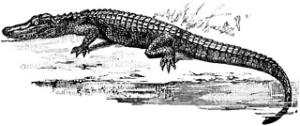MAFS.2.MD.1.2 Describe the inverse relationship between the size of a unit and number of units needed to measure a given object. Example: Suppose the perimeter of a room is lined with one-foot rulers. Now, suppose we want to line it with yardsticks instead of rulers. Will we need more or fewer yardsticks than rulers to do the job? Explain your answer.
Cognitive Complexity Level: 2 – Basic Application of Skills and Concepts
[divider] [/divider] Students are able to…
- Measure objects with two different units
- Discuss how the size of those two units relate to each other. For example, it will take a lot more inches than feet to measure the length of the room.
- Understand that larger units can be broken down into smaller units
[divider] [/divider] Students are able to…because teachers:
- Provide tasks that have students measure objects with two different units
- Provide time for students to discuss their findings when measuring with two different units
- Help the students being to describe how the two units relate to each other
[divider] [/divider] Questions to ask students:
- Ask: Pointing to the door of the classroom, do you think it will take more centimeters or meters to measure this line? Why do you think that?
- Sample answer that would indicate understanding: I think that it will take more centimeters than meters, because centimeters are much smaller than meters. A meter stick is made up of lots of centimeters.
- Sample answer that indicates an incomplete understanding or a misconception: I think that it will take more meters than centimeters, because meters are smaller than centimeters.
[divider] [/divider] Additional Resources:
Additional in depth content knowledge
Video:
http://www.sedl.org/secc/common_core_videos/grade.php?action=view&id=556
(from the beginning until about 3:30 and 7:28 until the end)
[divider] [/divider] Sample Formative Assessment Tasks:
This task can be completed individually or with small groups.
- The teacher asks the student to demonstrate, using his or her hands, the length of a foot and then the length of a yard.
- The teacher shows the student the Feet and Yards worksheet and reads the instructions with the student to ensure understanding.
- The teacher asks the student to explain why the measure given in feet is greater than the measure given in yards.
One zookeeper measured the alligator and said it was 6 feet long. Another zookeeper measured the alligator and said it was 2 yards long. Both zookeepers are correct. Can you explain why the measure given in feet is more than the measure given in yards?
[divider] [/divider] Resources/Tasks to Support Your Child at Home:
- Have your child choose objects to measure the length of at home with a ruler. Have them measure the length of the objects in centimeters and meters. Ask, “Did it take more inches or centimeters to measure the length of this same object? Why do you think that is?” They should see it takes more centimeters because they are a smaller unit than inches.
